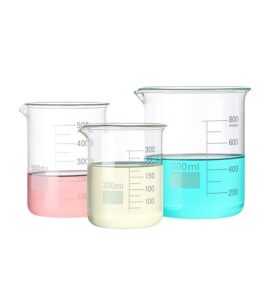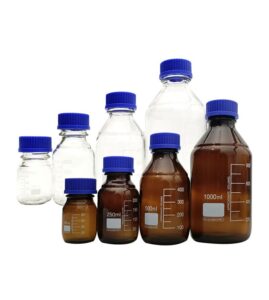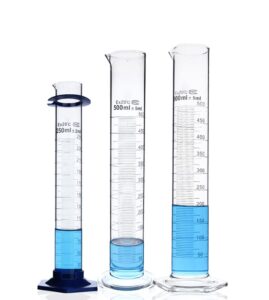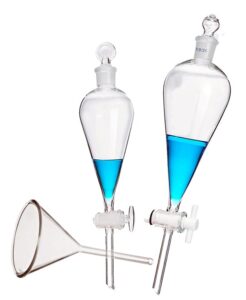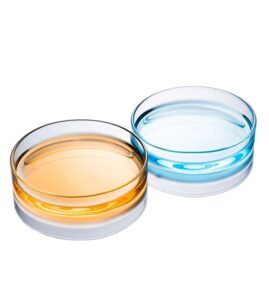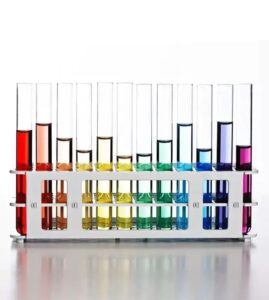Entering a laboratory, you’re greeted by shelves of gleaming glassware. Each piece, from beakers to burettes, plays a crucial role in scientific exploration. But with such variety, how does one make the right choice? What distinguishes a flask from a test tube in practical terms?
The art of selecting and utilizing laboratory glassware is a fundamental skill for any scientist or student. It’s a dance of precision and safety, where each selection can impact the outcome of an experiment. Mastering this art is not just beneficial; it’s essential for success in any scientific endeavor.
In this journey through the world of lab glassware, we’ll uncover the secrets to choosing and using these vital instruments effectively.

Understanding Different Types of Lab Glassware
When it comes to laboratory glassware, understanding its various types is essential for effective experimentation. Lab glassware can be broadly categorized into eight groups based on their usage and structural characteristics:
- Heating Instruments: These are glass instruments used for direct or indirect heating, such as beakers, flasks, test tubes, conical flasks, iodine flasks, evaporators, and distillation columns.
- Measuring Instruments: Used for accurately measuring or roughly gauging the volume of liquids. Examples include measuring cups, graduated cylinders, volumetric flasks, burettes, and pipettes.
- Bottle Types: Containers used for storing solid or liquid chemicals, reagents, or samples, such as reagent bottles, wide-mouth bottles, narrow-mouth bottles, weighing bottles, dropper bottles, and wash bottles.
- Tubes and Rods: This category includes a wide variety of glass instruments with specific uses, such as condenser tubes, distillation tubes, centrifuge tubes, colorimetric tubes, siphon tubes, connecting tubes, and stirring rods.
- Instruments for Gas Operations: Glassware used for the generation, collection, storage, treatment, analysis, and measurement of gases. This includes gas generators, gas washing bottles, gas drying bottles, devices for gas collection and storage, gas treatment apparatus, and instruments for gas analysis and measurement.
- Addition and Filtration Instruments: Mainly comprising various types of funnels and their associated filtering apparatus, like funnels, separating funnels, Büchner funnels, sintered glass funnels, and suction flasks.
- Standard Ground Joint Glassware: Glassware that comes with ground joints and stoppers, forming a unit combination of glass instruments.
- Miscellaneous: This category includes glass instruments not covered in the above categories, such as alcohol lamps, desiccators, crystallizing dishes, watch glasses, mortars, glass valves, etc.
In the lab, each piece of glassware has a specific purpose, and choosing the right one can significantly impact the accuracy and safety of your experiments.
By familiarizing yourself with these categories, you can ensure that you select the most appropriate glass instrument for your scientific needs, leading to more successful and reliable experimental outcomes.
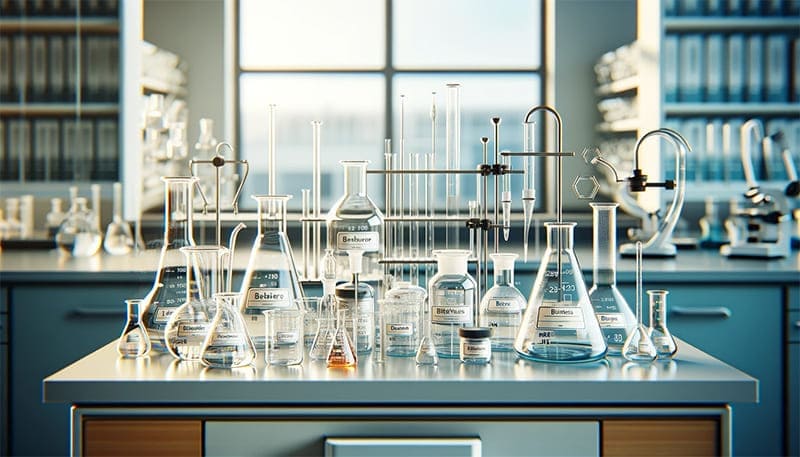
Comprehensive Guide to Lab Glassware Uses and Limitations
Navigating the diverse world of laboratory glassware requires an understanding of the specific uses and limitations of each type. This knowledge is crucial for ensuring safety and precision in scientific experiments. Below is a table summarizing the various types of lab glassware, their typical applications, and any notable limitations.
Lab Glassware Types and Their Applications
| Glassware Type | Typical Uses | Limitations |
|---|---|---|
| Beakers | Mixing, heating, and pouring liquids | Not suitable for precise measurements |
| Flasks (Erlenmeyer, Volumetric) | Mixing chemicals, precise volume measurements | Erlenmeyer flasks are not for accurate measuring |
| Test Tubes | Holding small samples, heating substances | Limited volume capacity |
| Burettes | Precise liquid dispensing in titrations | Requires careful calibration |
| Pipettes (Graduated, Volumetric) | Transferring precise volumes of liquids | Requires skill for accurate use |
| Graduated Cylinders | Measuring liquid volumes | Less accurate than volumetric glassware |
| Condensers | Cooling and condensing vapors | Fragile, handle with care |
| Funnels | Transferring liquids, filtering | Not for storing substances |
| Gas Generators | Producing gases | Handling hazards with reactive gases |
| Wash Bottles | Dispensing distilled water or solvents | Limited to non-reactive liquids |
Selecting the appropriate laboratory glassware, with an understanding of its unique applications and limitations, is fundamental for accurate and safe scientific experimentation. Embrace this knowledge as a crucial tool in your scientific endeavors, ensuring both experimental success and personal safety.
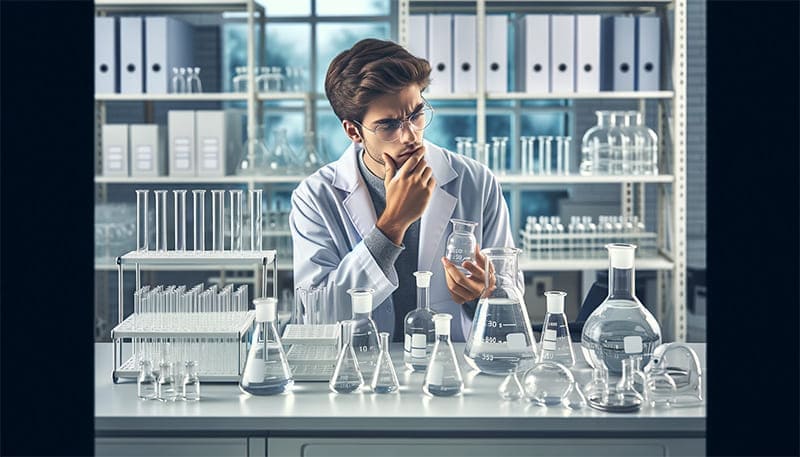
Choosing and using the Right Glassware for Your Experiment
In the realm of laboratory work, the art of selecting and effectively using glassware is pivotal. It’s not just about having the right tools; it’s about ensuring accuracy, efficiency, and safety in your experiments. This guide will help you navigate the process of choosing the right glassware for your laboratory needs and how to use them correctly.
Choosing the Right Lab Glassware for Your Needs
The selection of glassware is determined by several factors including the nature of the experiment, the chemicals involved, and the required precision. Here’s how to make the right choice:
- Experiment’s Requirements: Assess the specific needs of your experiment. Does it involve heating, mixing, storing, or measuring substances? The type of experiment dictates the glassware choice.
- Chemical Compatibility: Choose glassware that can withstand the chemicals you’re working with. Some glassware is resistant to acids, bases, or solvents, while others are not.
- Volume and Size: Ensure the glassware can handle the volume of substances without risk of overflow or inadequate mixing.
- Precision Needs: For experiments requiring precise measurements, volumetric flasks, burettes, and pipettes are essential.
- Durability and Heat Resistance: If the experiment involves heating, choose durable and heat-resistant glassware, like borosilicate.
- Safety Considerations: Consider the safety features of the glassware, such as break-resistant coatings or reinforced rims.
- Cost and Availability: Balance the cost and availability of the glassware with your needs. High-quality glassware can be a good investment for frequent and demanding experiments.
- Application-Specific Glassware: Some experiments might require specialized glassware, like distillation columns for separation processes or specialized flasks for certain chemical reactions.
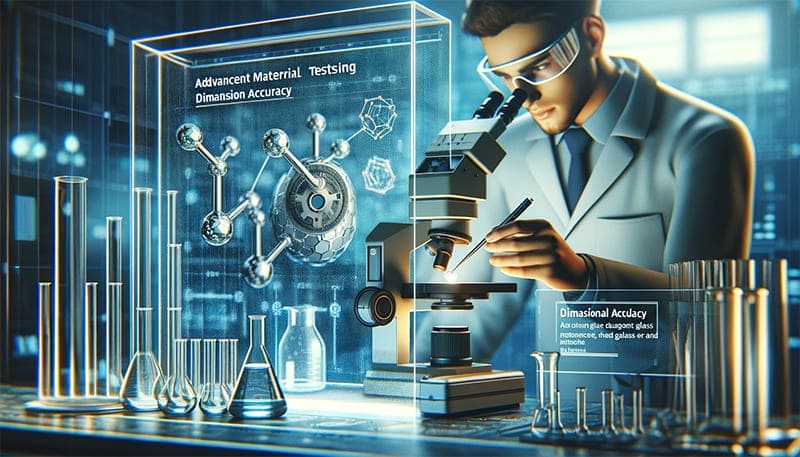
Using Laboratory Glassware Effectively
In the laboratory, selecting and using the correct glassware is vital for the success and safety of your experiments. Each type of glassware has its specific purpose and characteristics. Here’s an overview of the main types of laboratory glassware and their recommended uses:
Test Tubes: Used for reactions with small quantities of reagents or storing solutions. They come in various sizes and shapes, such as straight or U-shaped. Key tips:
- Ensure they are clean to avoid contamination.
- Use test tube holders or stands when heating to prevent accidents.
- Stir or shake contents before adding substances to avoid uneven distribution.
Beakers: Ideal for holding large volumes of liquids or solids, beakers have wide openings and relatively thin walls. Important considerations:
- Clean thoroughly to prevent residue.
- Use asbestos mesh or wire gauze when heating.
- Be mindful of the amount and sequence of additions.
Flasks: Including Erlenmeyer and volumetric flasks, they are used for mixing, heating, and chemical reactions, featuring long necks for easy mixing and thicker walls for durability. Usage tips:
- Keep flasks clean to ensure accurate results.
- Securely place on heating devices.
- Add chemicals carefully, considering their reactivity and volume.
Burettes: Essential in titration, they have precise scales for measuring liquid volumes accurately. Usage guidelines:
- Clean to eliminate residues.
- Calibrate for accuracy.
- Control titration speed and volume to ensure precision.
Volumetric Flasks: Used for precise measurement of liquid volumes, they are calibrated for a specific volume. Key points:
- Clean thoroughly for accurate measurements.
- Fill carefully to the calibration mark.
- Mix solutions well for uniform concentration.
Pipettes: Designed for accurately transferring measured volumes of liquids. They come in various types like graduated and volumetric pipettes. Important to:
- Clean before use to avoid cross-contamination.
- Use with care to transfer exact volumes.
- Rinse after use to maintain cleanliness.
Graduated Cylinders: Used for measuring and transferring liquids with moderate precision. Key usage points:
- Ensure clarity of scale for accurate reading.
- Pour liquids gently to avoid splashing.
- Clean after use to maintain accuracy.
Condensers: Essential in distillation processes, used to cool and condense vapors back into liquid. Considerations:
- Ensure tight connections to prevent vapor loss.
- Use cooling water properly for efficient condensation.
- Handle with care to prevent breakage.
Funnels: Used for transferring liquids and powders into containers with small openings. Usage tips:
- Choose appropriate size for the container.
- Place securely to prevent spills.
- Clean after use, especially when changing substances.
By understanding the specific uses and handling requirements of these various types of glassware, you can enhance the accuracy and safety of your laboratory work. Proper selection, cleaning, and maintenance of glassware are essential practices in any lab setting.
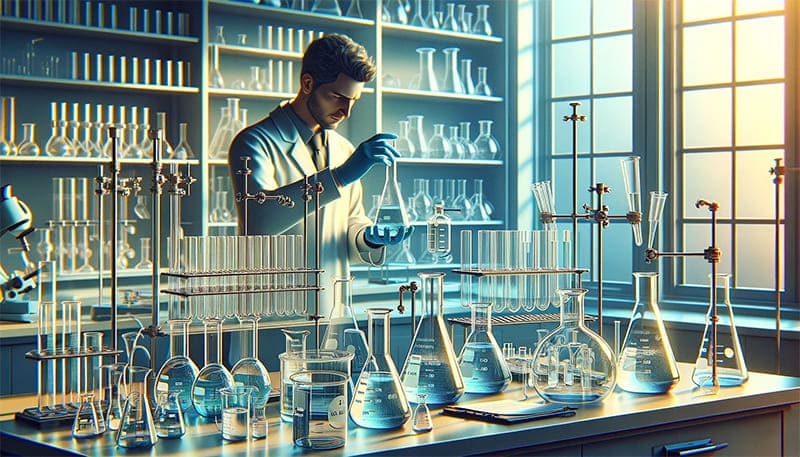
Best Practices for Using Laboratory Glassware
Using glassware safely and effectively is as important as selecting the right type. Here are some best practices:
- Handling: Always handle glassware with care to avoid breakage.
- Cleaning: Proper cleaning is essential to prevent contamination between experiments.
- Storage: Store glassware in a safe, organized manner to prevent damage.
- Inspection: Regularly inspect glassware for any cracks or chips.
Conclusion
Mastering the selection and use of laboratory glassware is not just a skill but a necessity for precision and safety in scientific endeavors. Whether you’re a student embarking on your first laboratory experience or a seasoned scientist, this guide is an invaluable resource. Remember, the right glassware is the cornerstone of any successful experiment. So, take the time to understand, choose wisely, and use it with care. Embrace the art of precision and contribute to the world of scientific discovery with confidence and responsibility.


